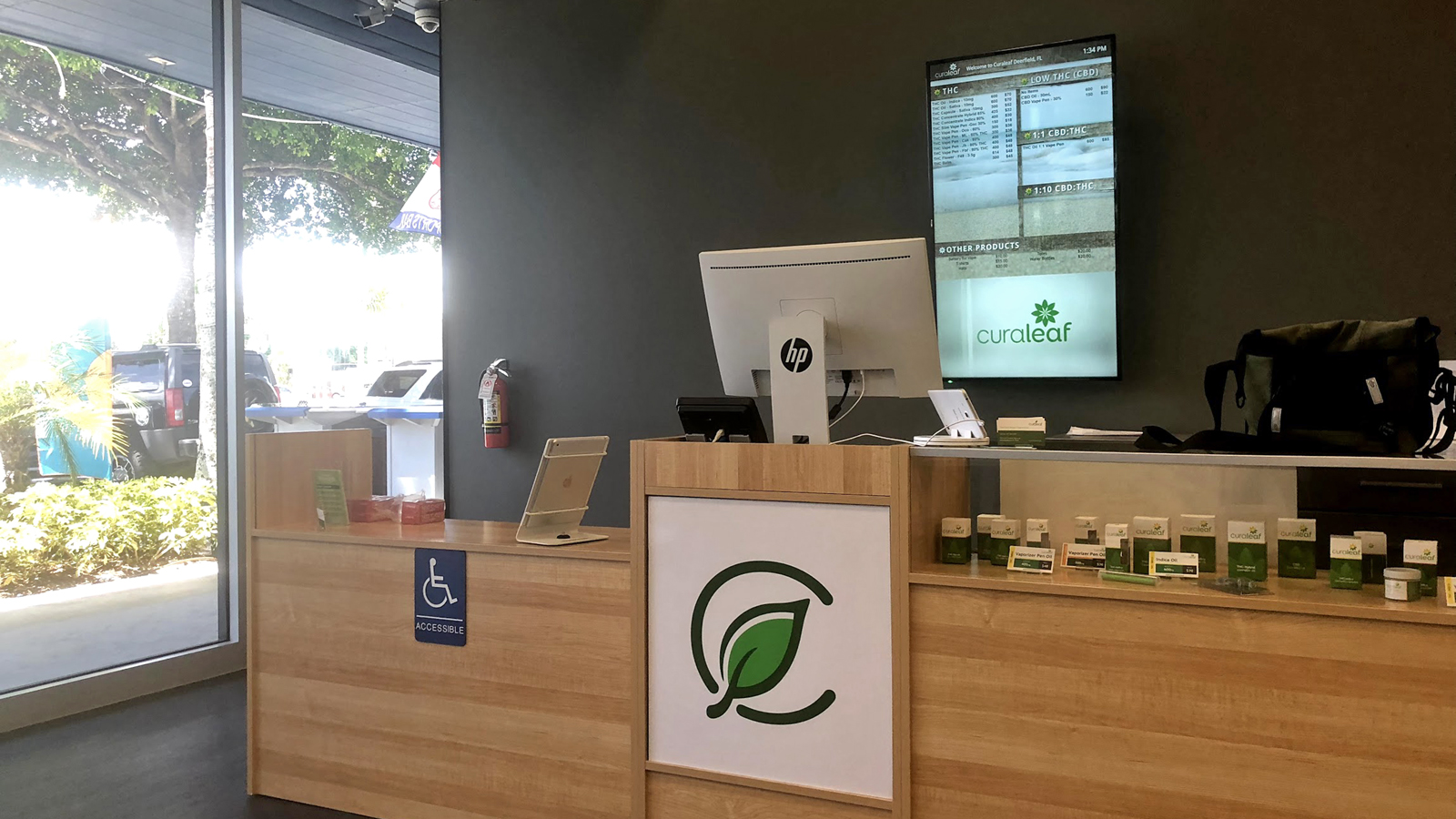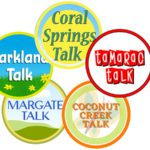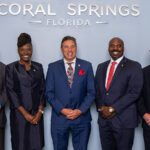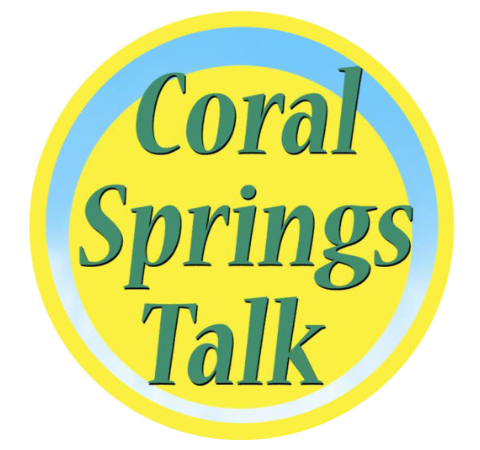
By: Jason Perlow
Medical Marijuana in Florida is a relatively new addition since the enactment of Amendment 2 signed into law in June of 2017. However, over a year after the enactment and nearly 182,000 patients added to the state medical marijuana registry, there are not many dispensaries open in the state where patients with qualifying conditions can obtain the medication they so desperately need.
The reasons for this are numerous, but ultimately stem from long-established stigmas associated with marijuana (cannabis) users, which is another subject matter entirely and outside the general scope of this article.
Many towns in South Florida have put a moratorium on the opening of medical marijuana dispensaries, for no other reasons other than blatant displays of NIMBY (“Not in my backyard”) and a gross misunderstanding of the purpose and operational practices of these facilities. Coral Springs is one of them.
CORAL SPRINGS, MEDICAL MARIJUANA BATTLEGROUND CITY
In January 2018, Vice-Mayor Lou Cimaglia, along with commissioners Joy Carter and Larry Vignola voted against medical marijuana dispensaries in Coral Springs. The late Mayor Skip Campbell, who recently passed, and commissioner Dan Daley voted Yes for the opening of dispensaries in the city. Lou Cimaglia is now acting mayor of Coral Springs.
As to why he voted No, Cimaglia cited his beliefs that marijuana was a “gateway drug”. Vignola has issued his concerns about the medical marijuana industry reflecting “pill milling” of existing pain clinics and attracting out-of-town and out-of-state undesirables, whereas Joy Carter was seeking additional guidance from the state and also echoing pill milling concerns from Vignola.
Carter has also made comments on Coral Springs Talk stating that she feared dispensaries as potentially overtaxing the resources of the Coral Springs Police, and attracting crime as her ultimate reasons for voting against “dispensaries on every corner.”
The upcoming November election for Coral Springs commissioner seats (currently occupied by Daley and Cimaglia) as well as a special election for mayor in March, may ultimately decide whether or not we will ever see a dispensary in the city.
JUMPING THROUGH HOOPS FOR A RECOMMENDATION
Electing sympathetic officials across the state is our best bet long-term if we as Florida citizens want wider access to this medication. But if our Coral Springs residents want medical marijuana now, and they can’t get it here in the city, then what recourse do they have?
Well, they can start by getting their medical marijuana recommendation, so they can purchase from dispensaries outside the city or get home delivery, which is an option statewide.
For Coral Springs residents who want to get access to medical marijuana, a number of steps have to be followed. First, they need to have a qualifying condition, which are listed at the Florida Department of Health Office of Medical Marijuana Use website.
Among these qualifying conditions are cancer, epilepsy, glaucoma, HIV, AIDS, and post-traumatic stress disorder (PTSD). But this becomes a much broader list because of the legal verbiage which includes “medical conditions of the same kind or class as or comparable to those above.” So for example, General Anxiety Disorder (GAD), provided there is a documented diagnosis from a psychiatrist, falls under this classification because it is similar to PTSD.
But if you think you can just get any of your doctors to sign you up for medical marijuana, you cannot. Most physicians will not do this for their patients because of the significant administrative burden that is required, and because they are concerned of the legal ramifications and the possible threat to their medical licenses and other certifications out-of-state.
The medical marijuana legislation enacted in Florida requires a lot of a paperwork churn when compared to other states, such as California, with similar medical marijuana programs. A doctor in Florida must submit paperwork to the OMMU on behalf of each patient every 45 days that they are still eligible to use medical marijuana, and also submit a recommendation for dosages every 70 days as well.
The patient is also required by law to do in-person visits with the recommending physician every seven months.
As a result of this substantial paperwork burden, specialized medical practices have formed in Florida. Companies such as DOCMJ.COM, which have multiple doctors in their practice and physical offices in Fort Lauderdale and West Palm Beach, operate for the sole purpose of helping patients to get and maintain their medical marijuana recommendations.
Because the paperwork is excessive, the price of maintaining a certification for a patient is also high. At DOCMJ, for example, a $169 payment must be made for every 7-month follow-up. Florida’s OMMU also charges $75 a year for the physical card, which takes about on average a month to get. $400 per patient for the yearly burden for this privilege is about par for the course, not including the costs of the medication.
Once approval occurs — which is typically within two weeks of the physician issuing the recommendation — a patient may then sign onto the MMUREGISTRY website where they can pay the OMMU the yearly fee for the card and view the status of their medical marijuana recommendations. They can then use that ID number to place orders with dispensaries for medication.
FLORIDA MEDICAL MARIJUANA 101
Once you have the recommendation, you will have the ability to purchase medical marijuana from a dispensary, otherwise known as a Medical Marijuana Treatment Center (MMTC). You can do it in person at a store location, or you can arrange for home delivery, usually for a small fee.
In Florida, marijuana for medical purposes is classified as either “medical marijuana” or “Low-THC”.
“Medical Marijuana” is medicine high in THC (Tetrahydrocannabinol) which is the primary psychoactive compound that gives it the characteristic “high”. THC also has a number of other therapeutic properties such as being a powerful analgesic and has been observed to kill certain types of cancer cells in clinical laboratory studies. The chemical properties of THC were isolated in 1964 by Raphael Mechoulam and Yechiel Gaoni at the Weizmann Institute of Science in Israel.
“Low-THC” marijuana in Florida primarily refers to medicines that contain CBD (Cannabidiol). CBD was first discovered in the 1940s, and like THC, is in the same family of organic compounds called Cannabinoids which work by attaching to a network of receptors in our bodies known as the endocannabinoid system. It doesn’t have the psychoactive effects of THC, it cannot get you high in any amount you take it in. And like THC, you cannot overdose on it.
While a lot less is known about CBD than THC because it hasn’t been as heavily researched, it has been observed to have anti-inflammatory properties and also has been known to produce drastic results in alleviating the effects of severe neurological disorders such as rare forms of childhood epilepsy. It also is used to treat PTSD and General Anxiety Disorder.
As with THC, additional research is needed to understand the full extent of CBD’s medicinal benefits but it is one of the most promising and broad-reaching of all the cannabinoids in terms of its overall potential therapeutic impact. So much so that the World Health Organization has recently recommended that it be completely de-scheduled as a restricted substance and that it be rendered harmless by governments currently regulating its use.
In Florida, a medical marijuana recommendation provides a patient with up to three routes of use, which can be chosen and then changed by the patient at any time provided their doctor does it on their behalf. Routes include Oral, Sublingual, Topical, Vaporized or Rectal. Smoking of marijuana flower is not currently an option in the state due to political efforts by the Governor’s office, and while various legal judgments have been made in support of it, it is currently under an appeals process.
For each route, a patient will receive a recommendation for “Medical Marijuana” and “Low-THC”. The recommendation is measured in units of thousands of milligrams. So for example, if a patient has Inhalation, Oral, and Topical as their chosen routes, a doctor might recommend 14000 units of Oral, 14000 units of Inhalation and 3500 units of topical for “Medical Marijuana”.
Correspondingly, the doctor will order 14000 units of Oral, 14000 of Inhalation and 3500 of topical for “Low-THC”. The total amount of order for each route is going to be entirely based on the doctor’s relationship with the patient, and there are no actual recommendations of specific products. It is not uncommon for a marijuana doctor to recommend the maximum amount of dosage that is allowed by law, regardless of the patient’s qualifying condition.
WHAT THE RECOMMENDATION ACTUALLY GETS YOU
The current protocol among most medical marijuana doctors in Florida is to allow patients to experiment with the various products sold at dispensaries in order to determine what works best for their overall therapeutic benefit. Different patients respond to different products differently and there is also wide variation in what is actually sold between one dispensary and another. Additionally, there is potency variation at MMTCs between yields of the same product between different harvests because we are dealing with organic materials and not pharmaceuticals with manufacturing methods intended to produce a consistent product.
So for example, a 300mg vape cartridge at one dispensary might contain 96 percent THC, whereas, at another, it might be 60 percent THC. But because of competition, the price per milligram between dispensaries is largely consistent, at about 12 cents per milligram for THC in a typical vape cartridge. When purchased as raw distillate or concentrate, that price can drop down to about 7 cents per milligram.
The actual products sold at a Florida medical marijuana dispensary are medicines that are manufactured as a result of processing the marijuana flower into extracts or powders. In the cases of extracts, the whole plant flower, which has first been carboxylated (heated) is pulverized and then placed into canisters filled with extremely cold (supercritical) carbon dioxide, where it is agitated. All the oils, resin and terpenes (natural organic compounds also present in other plants such as citrus, dill, and hops) are extracted and it produces a sticky, gooey substance that resembles a thick tree sap.
This extract can be sold in its pure form, placed into capsules, or it can be blended with cutting agents such as additional cannabis-based or non-cannabis plant terpenes or MCT, which is a natural oil made from coconuts, in order to produce vape cartridges for use in vape pens. Alcohol can also be added as a solvent in order to create tinctures that can be taken orally, and heat activated marijuana can also be added to cocoa butter for topical use. It can also be hardened into a substance called “shatter” which provides for an extremely potent and high-quality inhalation using a specialized vaporizer.
Some dispensaries such as Trulieve and Curaleaf sell medical marijuana products in proprietary cups or “pods” which contain ground marijuana flower, which can be used with specialized vaporizers. This is the only way the whole flower can currently be used legally in Florida. The ground flowers can also be made into pills for oral use.
In addition to routes of use, and also the THC and CBD percentage potency for each product, and cutting agents used in products, there are differences between strains of marijuana used in the products between dispensaries. Just as there are many different varieties of grapes used in making wine or different countries of origin where coffee comes from that contributes to differences in flavor, there are many types of varieties of marijuana used in the production of medical marijuana medications.
Generally speaking, marijuana plants can be classified into two main genetic types: Cannabis Sativa, or Cannabis Indica. Sativa plants, which mostly originate from South America, are taller and have longer leaves, and typically have a more energetic high. Indica plants, which originate from various parts of Asia, are shorter and have wider leaves, and has a more calming, sedative effect, so it’s not uncommon to see it recommended for helping with sleep.
Most marijuana products sold at Florida dispensaries are actually not “landrace” or original sativa or indica varietals that grow in the wild. Instead, they are “hybrids” — crosses of different varieties of sativa and indica genetics that were created by breeders to produce different therapeutic effects. These plants all have different levels of THC, CBD, other cannabinoids and mixes of terpenes (which also have their therapeutic effects).
If the names of these hybrids are actually used in the product marketing, they will have funny names like “Tillamook Strawberry” or “Glass Slipper” or any number of other names depending on who the seeds were obtained from and potentially, their country of origin. There are hundreds of marijuana strains, and several dozens are in use in Florida MMTCs at any time.
But some MMTCs — such as Surterra — do not publicize what their strains come from, and there are no true genetic testing standards in place in Florida to prove what a plant actually is. Nor is there any labeling that helps the patient understand the composition of what they are buying from a terpene perspective, which is just as important as influencing the actual desired therapeutic effect as the percentage of THC or CBD in a particular medication.
An MMTC will create unique brand names in order to try to differentiate themselves instead, such as (in Surterra’s case) “Calm”, “Serene”, or (in KNOX’s case) “Polaris” or “Gemma” or simply just “Sativa”, “Indica” or “Hybrid”. Every MMTC has different products and also has areas of differentiation that set them aside from other MMTCs. VidaCann, for example, is a Florida exclusive licensee of both the Israeli medical marijuana program genetics from Tikun Olam, and a licensee of Charlotte’s Web, a popular CBD strain from Colorado.
So if your doctor does not give you a specific recommendation on what to use, how do you know what to buy? Well, in addition to a number of support groups that exist on Facebook (which many people will be reluctant to use for any number of reasons) you will probably want to go in-person to a dispensary and meet with a wellness coordinator — one of the dispensary consultants that are actually familiar with the products.
GETTING TO A DISPENSARY IS CHALLENGING
Despite Coral Springs’ leadership’s inability to get a consensus among its commissioners and act in the best interests of its residents, other towns in Broward and Palm Beach counties are making significant progress and are not only realizing substantial tax revenue, but economic development by virtue of being an oasis for medical marijuana and enjoying increased local commerce as well.
One such town is nearby Deerfield Beach, which has recently opened three facilities. VidaCann on Powerline Road, Curaleaf on Federal Highway, and Trulieve on Hillsboro Boulevard. Dania Beach has also recently opened a Trulieve dispensary, and Lake Worth is home to both a KNOX Medical and another Curaleaf in close proximity to each other on Federal Highway.
But why don’t we have more of these? In addition to political NIMBYism that is plaguing Coral Springs and other towns like Tamarac and Boca Raton, part of this has to do with the way Florida’s medical marijuana industry was designed.
Florida is a “vertically integrated” marijuana state. This is very different from California, for example, which is a “horizontally integrated” state. In California, Cultivation, Manufacturing, Testing, Dispensary, Distribution, and Transportation are all considered separate business activities. With the exception of Testing, a medical marijuana business can engage in any or all of those. So a dispensary might carry products from many different growers in California, as strictly a reseller.
Florida is different. An MMTC must control all aspects of its operation — Cultivation, Manufacturing, Transportation, Distribution and Dispensary, and provides for most forms of Testing internally. So the capital expenditure required to set up shop as an MMTC is massive, on the order of tens of millions of dollars.
This is further complicated by the fact that Florida law, as it is currently enacted, only allows for one dozen MMTCs per 100,000 patients added into the OMMU system. The approval process is extremely rigorous, onerous, and also to a large extent, politically influenced. Each MMTC is only allowed up to 25 retail locations in Florida for the first 100,000 patients in the system. There are currently 11 operational MMTC companies, with three in pre-production status. An MMTC may add 5 additional locations after each successive 100,000 patients registered by the OMMU. So there are significant limitations in scalability and capital investment if an MMTC is looking to expand its overall retail footprint.
The very concept of dispensaries multiplying and popping up on every corner is ridiculous, simply because of the bureaucratic controls Florida has enacted to prevent it from happening. Even if we were to become a recreational marijuana state, it’s extremely unlikely that vertical integration would be undone, and there’s no practical way to undo it either given the massive investments the MMTCs have undergone.
Dispensary locations also have fairly unique requirements. They have to be extremely secure, so there are few places in any town that are suitable for placing one.
It is important to distinguish the difference between pill mills/pain clinics and marijuana dispensaries. For starters, a patient cannot enter a dispensary without a Department of Health ID issued by the Office of Medical Marijuana Use. So nobody can just “buy”, and that includes children or anyone off the street looking to purchase this medication.
These are highly secure facilities that require private security personnel, video surveillance and locked out reception areas from the main dispensary operation, as well as physical security for the medication.
For example, KNOX Medical in Lake Worth is on the site of a former bank and has its medication secured in a vault. All of these facilities require strict Department of Health oversight.
Therefore there would only be a limited number of candidate sites in Coral Springs to place such a dispensary, none of which are near schools or large residential areas. And as stated earlier, it is also not possible to have “dispensaries on every corner” because of limitations imposed on MMTCs by the OMMU and the significant capital investment that would be required.
So the numbers and the financial commitment required by an MMTC to open a dispensary do not add up to “Unlimited” or “on every corner” as Coral Springs commissioners Joy Carter and Larry Vignola are so concerned about.
IN THE STORE
If you can actually get to a dispensary, what you will find is totally different from what you think a marijuana store looks like. These are not “head shops” with Haight-Ashbury inspired black light posters, glass paraphernalia, and other trappings of “stoner” culture that you might have seen in a Cheech & Chong movie.
These are medical facilities and are even more clinical in appearance than the pharmacy section at Publix.
What you will find is, for the most part, completely sterile surroundings, with glass cabinets displaying generic-looking packaging. There are no big jars of marijuana flower, and there aren’t even candy/edible products for purchase. There are pills, there are cartridges and other vaporizer supplies for sale, there are tinctures, there are topical creams. CVS and Walgreens have more interesting-looking products in their over-the-counter sections, to be perfectly blunt.
What these products lack in curb appeal, however, they make up for in their ability to heal people and provide relief for chronic conditions that nothing else can address or improve the overall quality of life for the patients that need them.
Most importantly, the dispensaries employ wellness consultants that are knowledgeable in the actual products, so that the gap between the medical marijuana recommendation made by the doctor — which is simply a number that affects monthly usage quota — is addressed.
In my visiting these facilities during their grand openings to the press, I have spent considerable time talking to these wellness consultants. I have found that many of them are patients themselves and are intimately familiar with medical conditions that are addressed by the products they carry. This personal touch is important for the medical marijuana neophyte who may have no idea how to navigate the array of products an MMTC may offer.
Many of these facilities also run educational seminars on a weekly or monthly basis and hold classes on different aspects of medical marijuana wellness, for specific conditions such as PTSD or addressing the needs of senior citizens.
But because of the NIMBYism and the lack of locations, many of these dispensaries have logistical issues and run out of product quickly. And the wait to get into these facilities can also be very long, frequently over an hour. So once you’ve had your initial visit, and are able to get a better grip on the type of products you need to address your condition, you might want to opt for home delivery instead, or when new products are released, to interact with their consultants over the phone.
CONCLUSION
Medical Marijuana is a relatively new concept in Florida, and we have a long way to go before the stigma of use is removed, and that citizens that use it as patients will have basic rights such as employment protection, which they do not have now. The use of marijuana flower, edibles, and the issue of home grow is also currently up for debate and is not likely to be settled in the immediate future.
But it is clear that as an industry, medical marijuana has tremendous potential not just for its citizens as an alternative to traditional pharmaceuticals, but also presents tremendous economic opportunity for the state, with its over 20 million citizens who overwhelmingly approved its legalization for medical use, with over 72 percent favoring it with the enactment of Amendment 2.
Coral Springs, which has traditionally been one of the most progressive cities in the State of Florida, is now in danger of falling behind other nearby communities such as Deerfield Beach, Dania Beach and Lake Worth which are becoming medical marijuana “oases” and as such, will benefit the residents of those cities as well as ours who will travel to them specifically for treatment and ultimately spend money and engage in other economic activity. Not in Coral Springs.
The precedent has now been set, and we will not be seen as a medical marijuana-friendly city because of the bumbling of our city leadership. The only way we will change this is to elect officials who are sympathetic to the needs of its citizens — and the opportunity to do that is now.
Author Profile

Related
 NewsDecember 1, 2025Broward County Commissioner Udine Highlights New Omni Hotel, Sand Bypass Project and Local Holiday Traditions
NewsDecember 1, 2025Broward County Commissioner Udine Highlights New Omni Hotel, Sand Bypass Project and Local Holiday Traditions NewsDecember 1, 2025Coral Springs Commission: Holiday Lights, Parades, and Family Fun Shine Across the City This December
NewsDecember 1, 2025Coral Springs Commission: Holiday Lights, Parades, and Family Fun Shine Across the City This December NewsOctober 1, 2025Coral Springs Commission: October Brings Oktoberfest, Fire Safety and Halloween Fun
NewsOctober 1, 2025Coral Springs Commission: October Brings Oktoberfest, Fire Safety and Halloween Fun NewsSeptember 1, 2025Broward Commissioner Udine: September Brings School, Culture, and Community Events Acros
NewsSeptember 1, 2025Broward Commissioner Udine: September Brings School, Culture, and Community Events Acros







